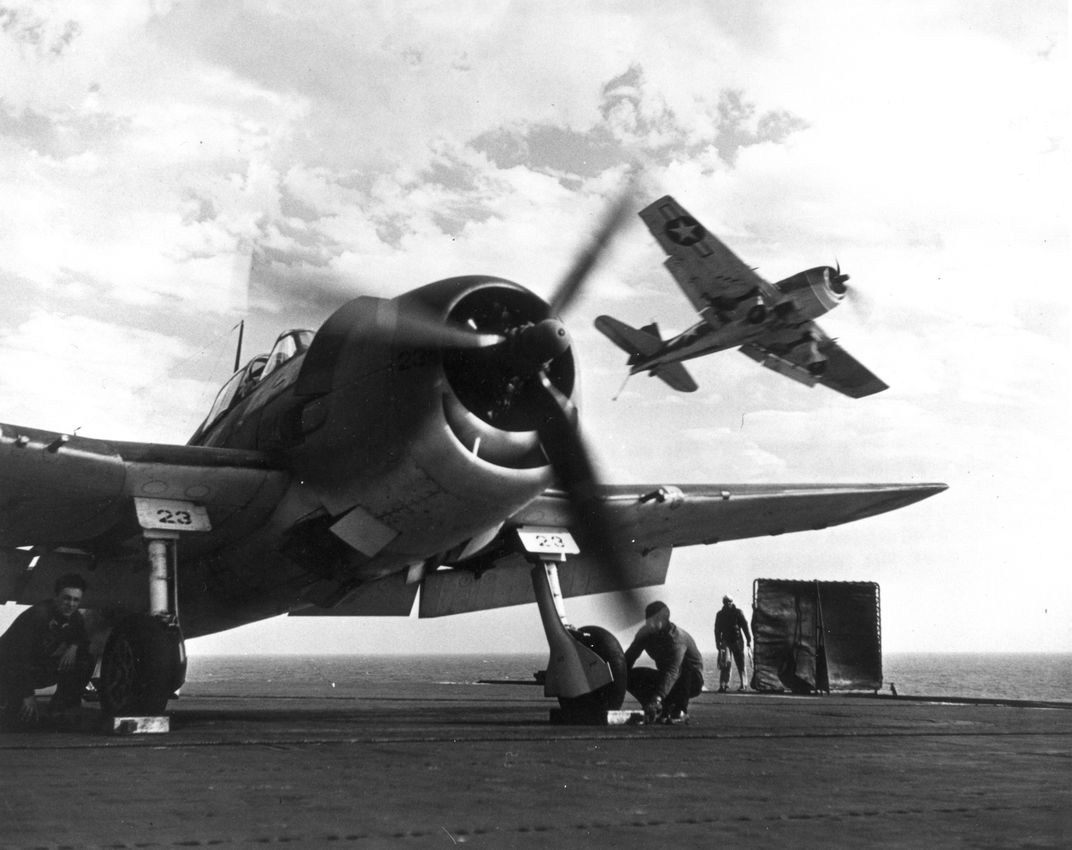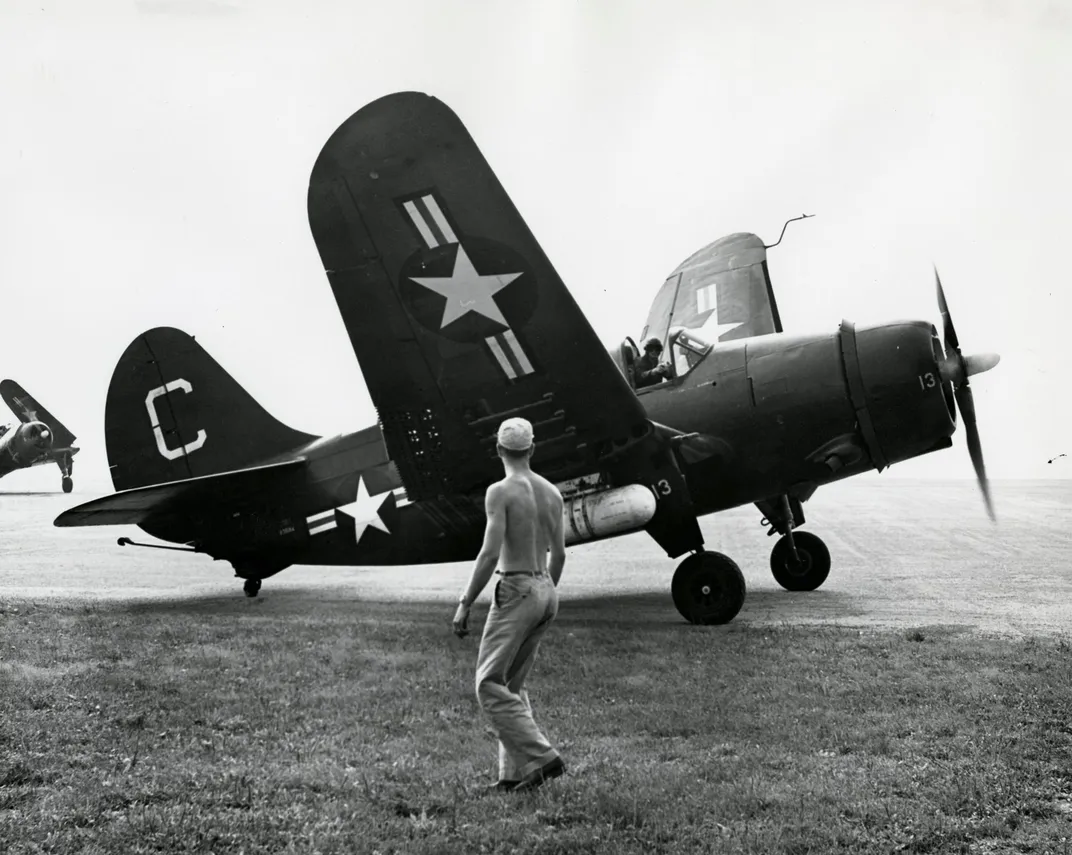Hellcats, Helldivers, and Avengers
/https://tf-cmsv2-smithsonianmag-media.s3.amazonaws.com/filer/d2/e8/d2e8cdd3-8078-4dde-9819-bf24672cd46a/avenger.jpg)
Never was there a single-day aerial thumping like the June 19, 1944 Battle of the Philippine Sea. In a flotilla 40 miles wide that included 15 aircraft carriers, U.S. Navy Task Force 58 arrived to establish an island base on Saipan for B-29 Superfortresses bound for Japan. The Japanese Mobile Fleet intervened with nine carriers. Addressing his pilots, task force commander Admiral Marc Mitscher was succinct: “Cut their damned throats.” By nightfall on the 19th, Japan had lost at least two-thirds of the 373 carrier aircraft committed. One of two Japanese carriers sunk that day had launched aircraft against Pearl Harbor. American losses were 29 aircraft plus nominal damage to a single battleship. On the to-do list of 20th Air Force B-29s, Tokyo was penciled in.
On June 19, 450 Hellcats launched from the flattops of Task Force 58. F6F pilots owned the sky, hung curtains, and furnished it. The fighter’s battery of six Browning .50-caliber machine guns shredded approximately 250 Japanese aircraft. How lopsided was the fight? Hellcat ace Alex Vraciu launched from the Lexington’s wooden deck and downed six Japanese “Judy” dive-bombers in less than eight minutes. (The Hellcat’s meaner brother, the Bearcat, arrived too late to bring its blistering climb rate—10,000 feet in 94 seconds—to bear in combat.)
Grumman-designed and GM-built, the TBM Avenger, a single-engine, three-seat torpedo bomber, joined the battle. Though the heaviest single-engine airplane of World War II, the sub-stalking Avengers occasionally became dogfighters on June 19. Outnumbered by a roving pack of nimble Zeros, two Avengers deftly gained positional advantage and dispatched four no-doubt-surprised bandits.
The Curtiss Helldiver’s contribution on June 19: cratering the Japanese fleet’s refueling airstrips on Guam. Every Helldiver packed a 2,000-pound bomb or torpedo punch. On June 20, 52 of the dive bombers struck the Mobile Fleet. Ten were lost, but one delivered a direct hit to the flagship Zuikaku, which survived, only to be sunk four months later in the Battle of Leyte Gulf. Flying on fumes, Helldivers and Hellcats returned to the task force in darkness. Only five of the fuel-starved Helldivers found a flattop. The remainder ditched, while rescuers scrambled to haul crews out of the dark Pacific.
Back to A History of WW2 in 25 Airplanes
Next: P-47s Did It All
Last: B-26 Marauders, A-26 Invaders

